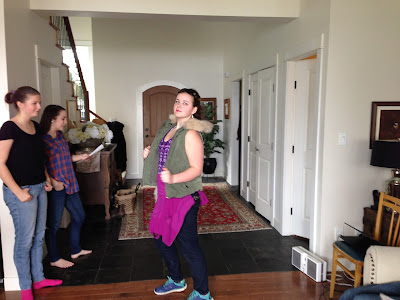For our final Merchant of Venice, I asked the students to rewrite the play in a different time frame or reality. We divided our group of 12 into two groups of 6. That gave them enough "players" to put on their presentation for us.
The two groups came up with polar opposite ideas. I gave them a story map from this page to write down their ideas for characters, plot etc. You might be able to find a free one online.
The first group used a barnyard theme with Sheeplock etc.. It was very inventive and had lots of humour.
The second group presented from the point of view of intellectual writers in the 50's-60's era. They had more of a narrative presentation.
What I love about group work is you never know where it will end up. Two groups of students, doing the same assignment and coming up with two totally different ideas to present the plot and characters of Merchant of Venice. Giving students the freedom to create is a wonderful way of exploring what they know. They knew Merchant of Venice very well!
After they presented for us they did a dress rehearsal and our final performance of The Merchant of Venice!
I love these Three Session Literature Learning Camps - it is just enough time to know the literature well, analyze it, do critical thinking exercises and put on the play! I don't think our students will ever forget Fiddler on the Roof, Pride and Prejudice, Midsummer Night's Dream, Tom Sawyer and many others we have done over the years ;)
Blessings,
Natalie






















